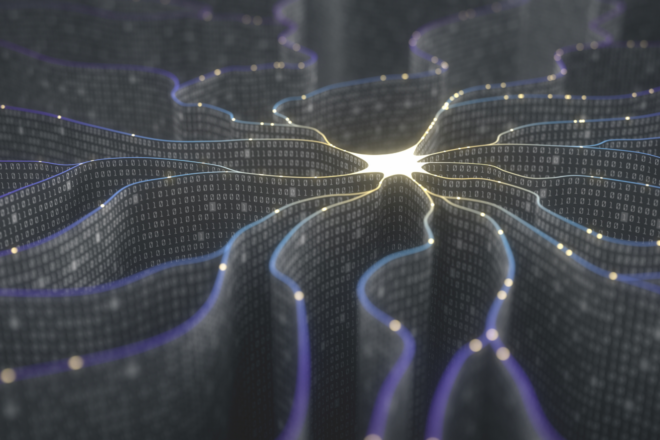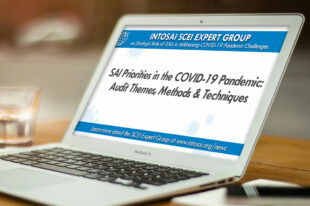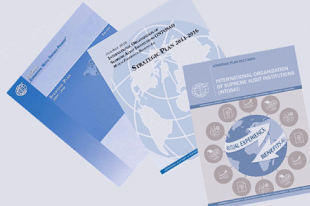Leveraging AI to Transform the Ex-Ante Audits of Government Procurement Contracts

Author: Adnene Maali, State Audit Bureau- Qatar
Role of SAIs in Ex-Ante Government Procurement Contract Audits
In the government procurement process, multiple bodies play a role in ensuring compliance and accountability before contracts are finalized. Government procurement oversight bodies such as ministries, authorities, and other specialized agencies are often tasked with the ex-ante audit or approval of public procurement contracts. They ensure that contracts align with legal requirements, financial thresholds, and tender specifications before they are signed. They often maintain a centralized contracts database, which holds records of procurement agreements from all government entities.
Some Supreme Audit Institutions (SAIs) have the mandate to perform ex-ante audits of procurement contracts. To manage the volume of these contracts efficiently, sampling methods are often employed. Contracts subject to ex-ante audit may be selected based on financial thresholds—for example, contracts exceeding a certain amount—or based on their type, such as those related to public tenders or strategic projects. This approach allows SAIs to focus on high-risk or high-value contracts, ensuring that potential issues are identified early without overwhelming resources.
However, challenges remain. SAIs must perform these audits under time constraints, and coordination with other ex-ante audit entities can lead to conflicting opinions. If a SAI disagrees with another body’s prior approval during a post-audit, it can result in delays or legal challenges, especially if significant resources have already been committed. Therefore, while ex-ante audit enhances preventive controls, it requires a strategic and collaborative approach to balance thoroughness with efficiency.
AI as a Transformative Tool in Ex-Ante Contract Reviews
Artificial Intelligence (AI) has transformed how legal organizations and contract-intensive businesses handle agreement reviews. Law firms, for instance, use AI tools like Kira Systems to analyze contracts and flag inconsistencies or legal risks through Natural Language Processing (NLP). Additionally, some government entities have adopted AI algorithms, such as those used by Palantir Technologies, to scan historical procurement data for fraud patterns, like repeated contract winners without competitive bidding. SAIs can apply these AI-driven practices, which are already transforming legal and forensic audits, to revolutionize government procurement contract audits. AI enables SAIs to process vast volumes of data faster and more accurately than human auditors, unlocking several key benefits:
- From Sampling to Comprehensive Data Audits: In many jurisdictions, regulations or procedures limit SAIs to auditing contracts based on financial thresholds, focusing on higher-value contracts due to time and resource constraints. This reliance on sampling leaves lower-value contracts unexamined. AI overcomes these limitations by enabling the review of all contracts, regardless of their value, ensuring full compliance coverage across the procurement process.
- Enhancing Compliance and Efficiency: AI’s ability to automatically identify compliance risks, such as non-compliant clauses or missing key terms, improves the overall efficiency of the audit. This enhances the detection of irregularities, allowing auditors to focus on higher-risk contracts that might require further scrutiny. For example, AI systems flag contracts that are missing essential clauses like performance guarantees or liability terms, streamlining compliance checks for auditors.
- Preventive Fraud Assessment: AI plays a vital role in identifying early red flags that could indicate potential fraud in procurement contracts. By using machine learning algorithms, AI can detect anomalies such as unusual payment schedules, significant deviations in pricing, or irregularities in bidder behavior—warning signs that warrant closer scrutiny. Rather than detecting fraud after it occurs, the ex-ante audit process focuses on identifying these red flags proactively, allowing auditors to address potential risks before they escalate.
- Proactive, Real-Time Audits: One of the most transformative aspects of AI is its ability to provide real-time monitoring. AI tools can continuously scan newly uploaded contracts, flagging issues as they arise. This proactive approach strengthens risk management, enabling auditors to address potential issues earlier in the procurement cycle rather than waiting for post-contract audits.
- Valuable Insights for Audit Planning: AI-driven ex-ante audit contract reviews can provide crucial insights that help SAIs better plan their future audits. By analyzing contract data, auditors can identify key risks, control weaknesses, or patterns that can inform the selection of entities for annual audit plans. Additionally, this insight can guide auditors in determining the focus areas for specific audit assignments of the contracting entities, enhancing the overall effectiveness of the audit process.

Implementing AI in the Contract Ex-Ante Audit Process
SAIs may consider the following steps in implementing AI into the contract ex-ante audit process.
- Building a Digital Foundation for AI-Powered Audits: The first and most crucial step toward leveraging AI in government procurement audits is the complete digitization of contracts. Transitioning from paper-based contracts to digital formats allows for easier access, centralized data management, and improved transparency. Technologies like Optical Character Recognition (OCR) play a vital role here by converting scanned paper documents into machine-readable text, ensuring that even non-digital contracts can be analyzed by AI systems. The digitization process should ideally be initiated and maintained by procurement oversight bodies, as many local legislations centralize government procurement contract data within these organizations. However, SAIs can act as champions of digitization, urging these stakeholders to initiate and expedite the process to ensure comprehensive and transparent audits. At the same time, SAIs can choose to develop their own digital systems as per their mandate, particularly when such centralized databases do not fully meet their needs or when they require specific features for advanced audits.
- Enhancing Digital Collaboration Between SAIs and Procurement Oversight Bodies: For Supreme Audit Institutions (SAIs), establishing strong data integration with regulatory bodies is crucial, particularly in accessing centralized procurement data. By setting up electronic linking systems, SAIs can connect directly to databases maintained by the government procurement oversight bodies. This eliminates the need for SAIs to invest significant resources in developing their own databases or working directly with the audited entities, especially when auditing smaller contracts or agencies. Such electronic integration ensures that SAIs can perform real-time audits, access the latest contract data, and focus their resources on higher-value contracts or more complex audits. This streamlined approach enhances audit efficiency while reducing the administrative burden on both auditors and the audited entities.
- Automated Data Extraction: Once contracts are digitized and direct access is established by SAIs, AI tools can automatically extract essential information—such as contract terms, financial amounts, and involved parties. This capability enables auditors to swiftly identify potential risks and prioritize their efforts on areas flagged by the system. Automating data extraction eliminates the manual and time-consuming process of reviewing contracts for relevant details, allowing auditors to concentrate on high-risk areas that necessitate more thorough examination.
- AI-Driven Data Analysis: After key data is extracted from procurement contracts, the next step is to utilize this information for comprehensive analysis. AI’s capacity to generate detailed statistics, identify patterns, and create visual summaries equips auditors with invaluable insights. By examining large datasets, AI uncovers trends and hidden correlations that may reveal underlying risks or inefficiencies within the procurement process. For instance, AI can pinpoint frequently occurring non-compliant clauses, enabling auditors to focus on potential systemic issues. This thorough analysis offers clear audit trails, facilitating the detection of irregularities and supporting evidence compilation for further investigation.
- AI-Powered Anomaly Detection: AI employs machine learning algorithms to identify anomalies in contract terms, pricing, and clauses that diverge from standard procurement patterns. These deviations may signal potential fraud, mismanagement, or non-compliance with tender requirements. For example, unusual pricing structures, advance payment schedules, or the lack of liquidated damages clauses can be flagged automatically. By effectively highlighting such irregularities, AI ensures that auditors can address these concerns promptly, thereby enhancing the overall scrutiny of procurement contracts.
- AI-Powered Anomaly Categorization and Alerts: After detecting anomalies in contracts, AI systems can categorize them based on severity, type, and destination. This smart categorization enables the system to automatically notify the appropriate authority—whether it’s an oversight body, audit team, or public investigation agency. By assigning responsibility based on the nature of the anomaly, AI ensures that findings are addressed efficiently and by the right experts. For instance, AI could identify a minor contractual inconsistency to be handled by the subject entity, while more serious findings like possible fraud could be immediately escalated to investigative authorities.
Conclusion
The integration of AI into government procurement contracts audit presents a game-changing opportunity for SAIs. By leveraging AI’s advanced capabilities, SAIs can not only address long-standing challenges such as resource limitations, audit sampling, and delayed risk detection but also improve the real-time, comprehensive audit process. This shift in approach from post-factum reviews to proactive and preventive strategies enhances public accountability and transparency.
The adoption of AI by SAIs is not just a technical shift but one that could reshape the audit landscape entirely. However, for AI to realize its full potential, existing mandates and legislations governing SAIs must evolve. These frameworks should accommodate AI-driven processes, allowing SAIs to embrace new audit capabilities previously unachievable. By doing so, SAIs will be empowered to enhance their role as custodians of transparency and public trust, leading to more effective oversight of government procurement activities.





